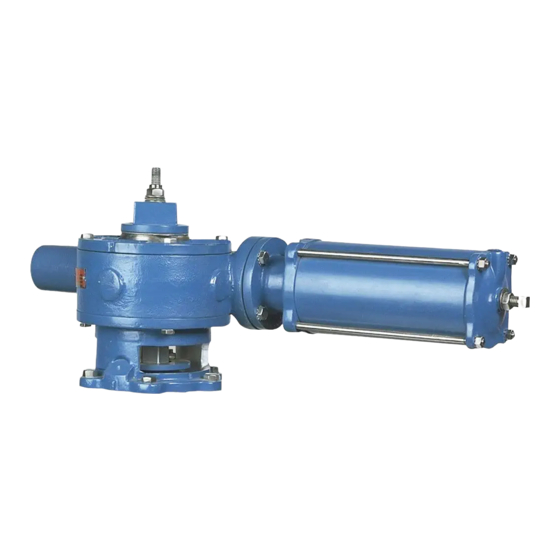DeZURIK
Cylinder Operated G-Series Actuator
Changing Mounting Positions
On 4–20" (100–500mm) valves, the actuator can be mounted in 30° increments around the valve shaft.
30° position changes require changing the timing between the gear sector and the rack; 60° position
changes do not require changing the timing.
On 24–36" (600–900mm) valves, the actuator can be mounted in 45° increments around the valve
shaft. 45° position changes require changing the timing between the gear sector and the rack; 90°
position changes do not require changing the timing.
Mounting Actuator in 60° Increments on 4–20" (100–500mm) Valves and
90° Increments on 24–36" (600–900mm) Valves
1. Remove the actuator from the valve. See "Removing Actuator" section.
Accidental operation of power actuator can cause personal injury or equipment damage.
Disconnect and lock out power to actuator before servicing.
2. Disconnect and lock out the pneumatic power to prevent accidental operation of the actuator.
3. Rotate the actuator into position.
4. Install the actuator on the valve. See "Installing Actuator".
Mounting Actuator in 30° Increments on 4–20" (100–500mm) Valves Only
When eccentric valves are mounted in a vertical pipeline, or mounted in a horizontal pipeline with the
plug stem horizontal, gravity can cause the plug to swing to a lower position in the valve body when
the actuator is removed. To avoid this problem, place the plug in the lowest position before removing
the actuator.
1.
Discontinue flow and relieve pipeline pressure.
Accidental operation of power actuator can cause personal injury or equipment damage.
Disconnect and lock out power to actuator before servicing.
2. Disconnect and lock out the pneumatic power to prevent accidental operation of the actuator.
3. Remove the lock nut, spring washers, wrenching nut and pointer from the plug stud.
4. Scribe corresponding lines on the actuator cover and housing, then remove the cover screws
and cover from the top of the actuator.
5. Mark which teeth of the rack and gear are engaged and lift the gear sector out of the actuator.
D10022
Page 16
August 2012

